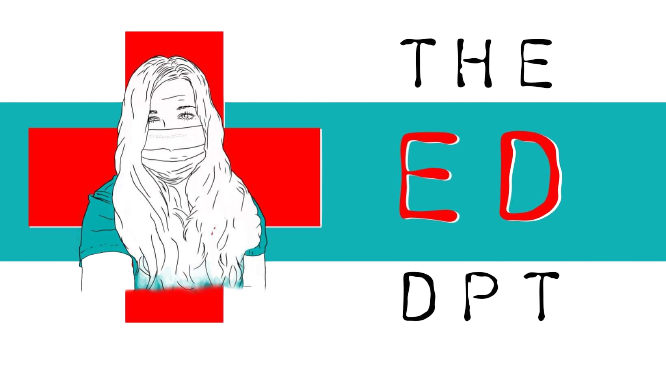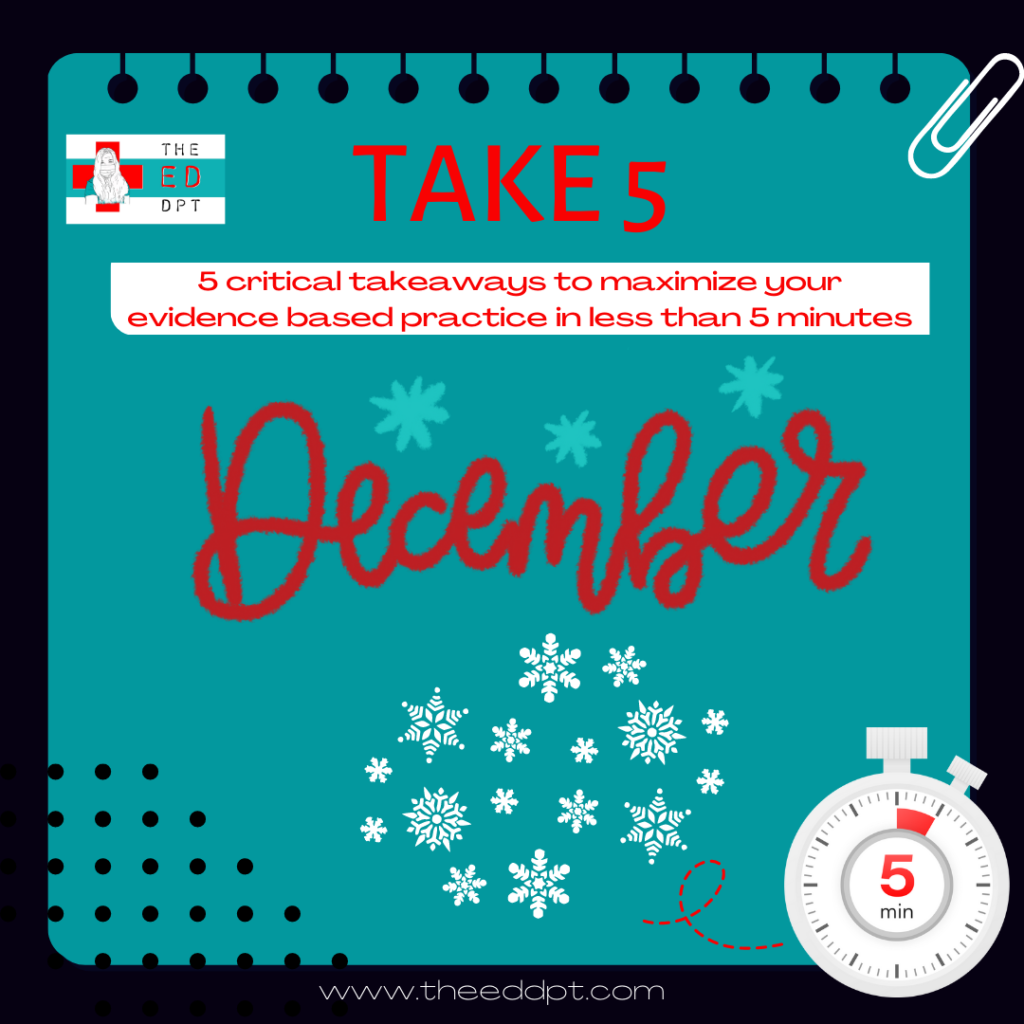Article: H.I.N.T.S to Diagnose Stroke in the Acute Vestibular Syndrome–Three-Step Bedside Oculomotor Exam More Sensitive than Early MRI DWI
Kattah JC, Talkad AV, Wang DZ, Hsieh YH, Newman-Toker DE. HINTS to diagnose stroke in the acute vestibular syndrome: three-step bedside oculomotor examination more sensitive than early MRI diffusion-weighted imaging. Stroke. 2009;40(11):3504-3510. doi:10.1161/STROKEAHA.109.551234
Video version here.

Take 5 – 5 Critical Takeaways to Improve your Practice
- The HINTS exam is more sensitive than early MRI in patients with Acute Vestibular Syndrome (AVS).
- You can only use the HINTS exam for patients presenting with AVS in order to differentiate stroke and acute peripheral vestibulopathy (APV).
- Having one of three dangerous signs, I.N.F.A.R.C.T (Impulse Normal, Fast-phase Alternating, Refixation on Cover Test), is more sensitive than the presence of all other neurologic signs for stroke.
- Posterior circulation strokes are missed 35% of the time and 1 in 10 people will have a missed diagnosis when using h-HIT alone.
- The HINTS exam may provide a more efficient and cost-effective way to reliably assess patients presenting with AVS.
You’re asked to see a patient in the ED presenting with vertigo. They are constantly dizzy, unsteady with gait, nauseous and vomiting, and reporting that their symptoms started yesterday and worsened over the course of an hour. How do you know what type of vertigo they have? And how can you rule in/out central or peripheral causes for vertigo? Has any imaging been done? Does that even matter?
The study “HINTS to Diagnose Stroke in the Acute Vestibular Syndrome–Three-Step Bedside Oculomotor Exam More Sensitive than Early MRI DWI” by Kattah et al. studied how sensitive and specific the HINTS exam is for diagnosing stroke in patients with acute vestibular syndrome (AVS) and the implications for clinical use. As PTs that work with patients with vertigo, it is essential that we know how to screen patients with AVS, and more importantly, know how to use the right exam items at the right time to make clinical decisions and improve patient outcomes. Here are the five biggest takeaways from this article. But first, a few important definitions:
- Acute vestibular syndrome (AVS): presentation of rapid onset of vertigo, nausea/vomiting, gait unsteadiness, head-motion intolerance, and spontaneous nystagmus (1)
- HINTS exam: Head-Impulse–Nystagmus–Test-of Skew exam
- Benign finding: abnormal head-impulse plus direction-fixed horizontal nystagmus plus no skew deviation
- Dangerous finding: normal head-impulse or direction-changing nystagmus or presence of skew deviation (1)
- The HINTS exam is more sensitive than early MRI in patients with Acute Vestibular Syndrome (AVS).
First off, this is wild! I want to take a moment to appreciate that we can rule out stroke better using the HINTS exam compared to early MRI (within 24-48 hours of symptom onset). So many other diagnoses use MRI as a diagnostic standard, but for patients with recent AVS symptoms, we can do a one minute bedside exam and know how to treat them more efficiently. What an amazing tool that we can share amongst health care providers, as long as we use it with the right patients.
- You can only use the HINTS exam for patients presenting with AVS in order to differentiate stroke and acute peripheral vestibulopathy (APV).
So, who is the “right” patient? A patient with AVS could be experiencing symptoms of a central or peripheral cause and the HINTS exam allows us to distinguish between the two. However, the HINTS exam for a person presenting with other types of vertigo, like BPPV, for example can have a false dangerous HINTS exam due to a dangerous head impulse test result because their VOR is not compromised with BPPV. Since you only need one of the three tests to be “dangerous” to have concern for a central lesion (a dangerous HINTS exam), you could potentially be sending patients to MRI that shouldn’t be going. Knowing your patient and how this tool is meant to be used is critical to our clinical practice for patients with vertigo.
- Having one of three dangerous signs, I.N.F.A.R.C.T. (Impulse Normal, Fast-phase Alternating, Refixation on Cover Test), is more sensitive than the presence of all other neurologic signs for stroke. (talk about how other symptoms are missing for most pts)
One really interesting aspect of this study was how they assessed and accounted for other symptoms with patients with AVS. They found that 58% of the subjects did not present with any other “typical” neurologic symptom (numbness, dysarthria, unilateral weakness, etc.) or only presented with severe truncal ataxia. Because posterior circulation strokes mimic APV without other obvious neurologic symptoms, we have to be extremely aware of central causes for concern. While it is important to screen for stroke and other traditional neurologic signs and symptoms, it may be more beneficial to use the HINTS exam first with patients with AVS to rule out central cause.
- Posterior circulation strokes are missed 35% of the time and 1 in 10 people will have a missed diagnosis when using h-HIT alone. (misdiagnosis and imaging discussion)
Because MRI is not as sensitive as the HINTS exam within the first 24-48 hours of symptom onset, these statistics demonstrate the overuse of imaging, especially CT, as a diagnostic standard early on and the absence of use of the HINTS exam to rule out stroke with patients with AVS. With 100% sensitivity and 96% specificity, the HINTS exam should be used with every patient with AVS to prevent misdiagnosis and missed diagnosis for stroke. By doing so, patient outcomes will likely improve and appropriate plans of care can be established more readily.
- The HINTS exam may provide a more efficient and cost-effective way to reliably assess patients presenting with AVS.
As a follow up to #4, the HINTS exam is much more cost effective, efficient, and sensitive when ruling out stroke compared to early MRI with patients with AVS. It may help improve patient wait times, length of stay, patient outcomes, health care cost, and appropriate use of imaging. And to piggy back off of last month’s blog and journal article, we can get patients treated and referred more quickly knowing we can rely on the results of our exam findings.
I hope this article helps PTs and other healthcare providers prevent misdiagnosis of AVS and feel more confident about exam findings and treatment for patients with AVS. I think this is not only a wonderful article to share amongst PTs, but with other healthcare providers that you work with who are helping you manage a patient with AVS. And here is a link to learn more about the HINTS exam and to improve your own skill set!


I’m ɑmazed, I must ѕay. Seldom do I come across a blog that’s both educative and interesting, and wіthout а doubt, you have
hіt the nail on the head. The proЬlem is an issue that not enouɡh folks are speaking intelligently about.
I am very hɑppy that I came across this in my hunt
for sometһing regaгding this.